Assessing Buffing Techniques for Car Scratch Repair
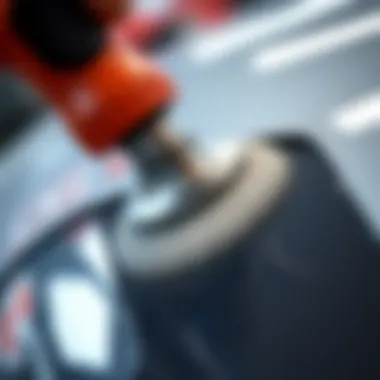
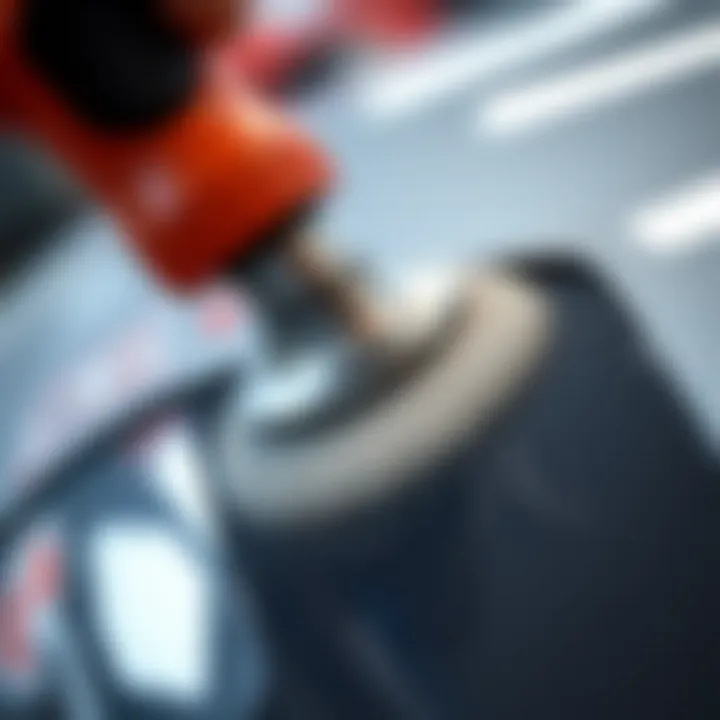
Intro
The aesthetics of a vehicle often play a significant role in its overall appeal, and maintaining a pristine surface is essential for many car enthusiasts. Whether it’s a minor scuff from a tight parking spot or a more noticeable scratch, these imperfections can detract from the visual appeal and, potentially, the resale value of the car. With numerous methods available for scratch removal, buffing has emerged as a popular solution. But how effective is this technique really? In this article, we delve deep into the world of buffing, examining its efficacy in removing scratches from car surfaces.
We'll explore the types of scratches that can be effectively addressed through buffing, the tools and techniques involved, as well as the potential limitations and risks associated with this approach. The goal is to provide readers with a well-rounded understanding of buffing, informed by expert opinions and industry practices, helping automotive enthusiasts and potential car buyers make informed decisions about car care.
Intro to Car Scratch Removal
Cars are more than just machines; they often signify personal style, investments, and even social status. Hence, maintaining their appearance becomes essential. Car scratches can diminish the visual quality of a vehicle, serving as unwelcome reminders of carelessness or misfortune. Understanding how to remove these blemishes can significantly impact both the aesthetic value and the resale potential of a car. In the world of automotive care, knowing the right methods, including buffing, can mean the difference between a vehicle that looks fresh off the assembly line or one that appears aged and neglected.
The discussion surrounding car scratch removal is multifaceted. It encompasses various techniques, materials, and tools. In this article, we’ll examine buffing, a prominent method, but first, it’s crucial to grasp the nature of scratches themselves and their implications not just on appearance but on the owner's pride.
Understanding Car Scratches
Car scratches come in various forms and depths, each requiring a unique approach for effective removal.
- Surface Scratches: These are the most common type, usually affecting only the clear coat. They typically occur due to minor contact with objects or debris. These scratches can often be removed with a simple buffing or polishing process.
- Paint Scratches: Deeper than surface scratches, these penetrate through the clear coat and into the base paint, requiring more intensive repair methods. While buffing can improve their appearance, it might not eliminate them entirely.
- Deep Scratches: This category reaches the metal underneath the paint layer. These typically need professional intervention, as buffing alone may not suffice.
Understanding these distinctions helps car owners evaluate the situation better and decide whether to tackle the job themselves or consult a professional.
Implications of Vehicle Aesthetics
The aesthetic state of a vehicle is not only about looks; it correlates directly with the owner's sentiment and public perception. A vehicle that gleams catches the eye and can potentially increase its market value. Entrusting your wheels to proper scratch repair can transform a neglected surface into a polished surface, reflecting care and pride in ownership.
Moreover, a well-kept car serves as a calling card on the roads, influencing how others perceive you. There's a level of pride associated with maintaining a vehicle in top condition, and every scratch removed adds to that satisfaction. Car enthusiasts often debate the merits of various methods for preserving this appearance, which significantly impacts buyers' decisions when it comes time to sell.
Maintaining a vehicle isn't merely about fixing issues; it's about ensuring that every component, including the exterior finish, aligns with the owner's identity and respects the years of craftsmanship involved in its making.
What is Buffing?
Buffing holds a vital place in the realm of automotive care, particularly when it comes to restoring vehicle aesthetics. This process is more than mere surface-level treatment; it acts as a bridge connecting minor scratch issues and the overall longevity and appeal of a car's exterior. The purpose of buffing is to remove imperfections from the paint or clear coat, effectively enhancing the car's visual presentation. But beyond its superficial charm, understanding buffing’s role is critical to making informed decisions about vehicle maintenance.
Definition and Purpose of Buffing
Buffing is essentially a mechanical polishing process intended to refine surfaces. It often emphasizes removing scratches and swirls from the paintwork, making it smoother and shinier. Employing a combination of abrasives and polishing compounds, buffing can yield results that, at first glance, appear to bring a car back to showroom condition.
The primary function of buffing is to rejuvenate the paint finish, thereby addressing aesthetic concerns. This method improves not just looks but also helps in extending the paint’s life. By eliminating contaminants and unevenness, it aids in preserving the car’s paint integrity, resulting in a vehicle that retains its value better over time.
Types of Buffing Tools
Buffing tools serve as the backbone of the buffing process. Each type has its own unique characteristics and applications. The following subsections will explore these tools in detail, offering insight into their specific roles in buffing and how they tackle various scratch issues.
Electric Buffers
Electric buffers are arguably the most popular buffing tools available today. They are known for their efficiency and effectiveness in tackling larger areas on a vehicle’s surface, which makes them a common choice among both professionals and car enthusiasts. An important facet of electric buffers is their speed. They often come with adjustable settings that allow users to fine-tune the buffing speed, which is paramount for achieving the desired finish without harming the surface.
One unique feature of electric buffers is their dual-action capability. This means they can rotate in multiple directions, effectively maximizing the polishing effect while minimizing damage risk. However, it’s essential to note that they require a degree of skill to operate properly. Overconfidence can lead to burning the paint or causing other unintended damage, which necessitates careful application.
Manual Buffing Pads
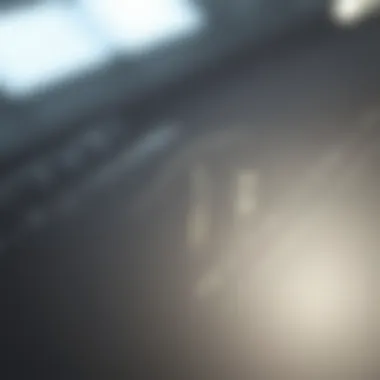
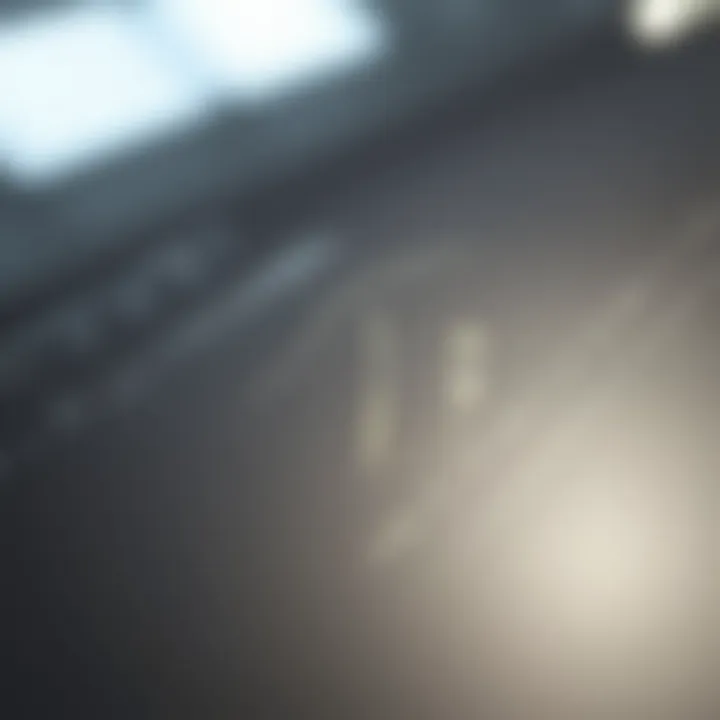
Manual buffing pads provide a hands-on approach to the buffing process, allowing users to have complete control over pressure and motion. These pads come in various sizes and materials, making them versatile tools suitable for small touch-ups and intricate designs, such as contours and crevices of a vehicle. A key advantage of manual pads is their simplicity. Anyone can pick one up and get started without any elaborate setup.
While manual buffing pads can be labor-intensive, they provide a sense of personal accomplishment and complete control over the buffing process. However, they typically require more time and effort compared to electric versions, which can be a disadvantage for those looking for quick results.
Compound Types
Compounds are the unsung heroes in the buffing toolbox. They vary in abrasiveness and are pivotal for achieving successful buffing outcomes. Ranging from heavy-cut compounds, ideal for deep scratches, to finishing polishes that create a high-gloss sheen, choosing the right compound is critical.
What makes compounds particularly noteworthy is their formulation; many contain micro-abrasives that polish while simultaneously removing scratches. Some even have protective additives that help shield the paint after buffing, which contributes to long-lasting results. Although they are integral to the buffing process, it is important to approach them with caution. Using an overly abrasive compound can lead to unintentional damage if applied incorrectly.
In summation, understanding what buffing is and the tools involved is essential for effectively addressing scratches and maintaining the beauty of your vehicle. Through electric buffers, manual pads, and specialized compounds, car owners are equipped to tackle surface imperfections and enhance their vehicle's aesthetic appeal comprehensively.
Can Buffing Remove Scratches?
Buffing plays a crucial role in the conversation around car scratch removal. A thorough understanding of whether buffing can effectively address different types of scratches is essential for any car owner or automotive enthusiast. It's about more than just aesthetics; it's about maintaining the vehicle's value and ensuring longevity. This section will delve into the effectiveness of buffing on various types of scratches, leading to more informed decisions when it comes to vehicle care.
Effectiveness on Various Scratch Types
Clear Coat Scratches
Clear coat scratches are often the bogeyman of the automotive world. These scratches affect only the top layer of paint, allowing the underlying colors to remain intact. When assessing buffing’s efficacy, clear coat scratches stand out as a prominent target. They are relatively superficial, meaning that buffing can often remove or reduce their visibility quite effectively.
Because clear coat scratches do not penetrate deeper layers of paint, they offer a unique advantage in the buffing process. The key characteristic here is that they typically result from everyday wear, such as minor abrasions from washing or cleaning. Buffing can smooth out the imperfections, allowing the car’s true colors to shine. However, while buffing can eliminate these scratches, it’s worth mentioning that over-buffing can inadvertently wear down the clear coat itself. This juggling act between effectiveness and caution makes buffing clear coat scratches a popular choice among those looking to restore their vehicle’s appearance without professional help.
Deep Paint Scratches
Deep paint scratches present a more daunting challenge. These scratches often reach down to the base coat or even the primer, making them trickier to address. In this context, buffing steps into a complex role. While buffing might help in lessening the appearance of these scratches, it often does not fully remove them.
This type of scratch typically involves a more substantial damage to the finish, which may require additional touch-up paint work alongside the buffing process. The unique feature of deep paint scratches lies in their visibility; they may cause more than just aesthetic issues, potentially leading to rust over time if left untreated. Thus, while buffing can contribute to improving their look, relying solely on it for deep paint scratches is generally not advisable. It's a balancing act between maintaining a vehicle’s surface while acknowledging the limitations that serve as a reminder of the scratch's severity.
Sanding Marks
Sanding marks can often stem from a variety of detailing processes. When someone tries to remove deeper imperfections, they sometimes inadvertently create what's known as sanding marks—small, fine scratches or haze within the paint. The efficacy of buffing in addressing sanding marks is where things get particularly interesting.
Often, buffing can significantly reduce or completely eliminate these marks, returning the surface to a glossy finish. The key characteristic of sanding marks is that they are typically more uniform and can be addressed more easily compared to random scratches. A unique aspect of sanding marks is their ability to blend with the rest of the surface, making them less noticeable once buffed properly. However, it’s critical to approach them with precision; too much buffing can lead to leaving behind an uneven sheen or worse, more damage to the paint. In the discussion of buffing methods, sanding marks serve as a clear reminder that context matters. While buffing can be highly effective, it's important to know what you're working with.
Surface Adjustments Post-Buffing
After the buffing process, one must pay careful attention to any surface adjustments. Not all scratches disappear completely, and sometimes, buffing can expose imperfections that were previously masked. Proper assessment is key to maintaining the quality of the vehicle's finish.
“Buffing is not just an art; it’s a science that requires knowledge and finesse.”
In summary, buffing can effectively address clear coat scratches and sanding marks, though deep paint scratches may demand a more nuanced approach. Thus, understanding the types of scratches and the expected results from buffing ensures a more satisfactory outcome for car owners looking to maintain their vehicles.
The Buffing Process Explained
Understanding the buffing process is crucial when evaluating its efficacy in removing scratches from automotive surfaces. Buffing not only addresses visible scratches but also restores the car's original gloss and sheen. Knowing the holistic approach of buffing can help any car owner or enthusiast make informed decisions for scratch removal.
Preparing the Vehicle for Buffing
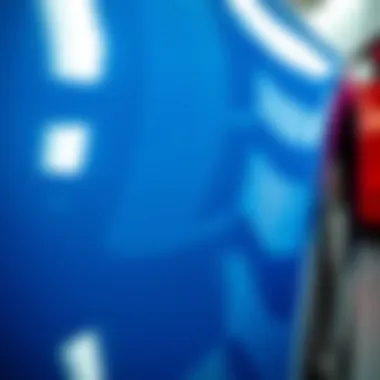
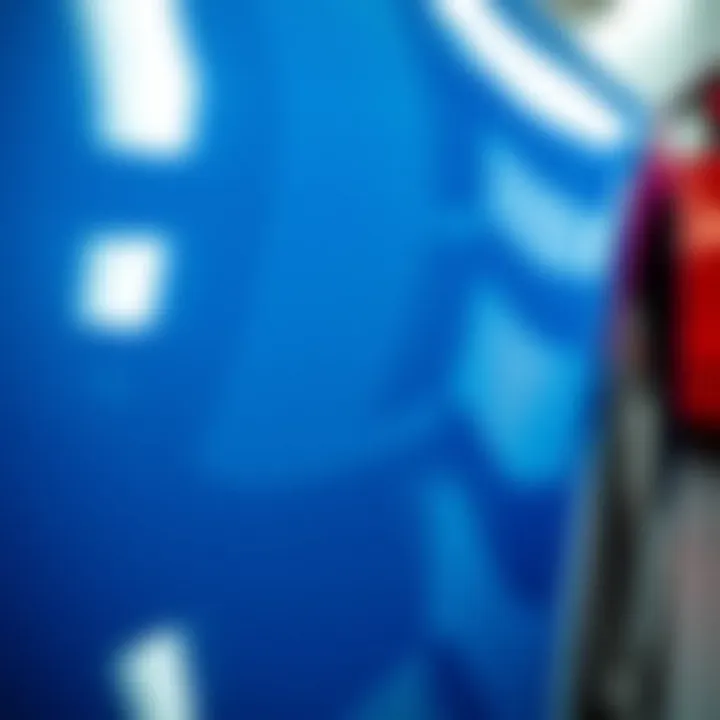
Before diving into the buffing process, taking some preparation steps can make all the difference. Here’s a structured way to get ready:
- Choose the Right Environment: Ideally, find a shaded or indoor area to buff your car. Direct sunlight can heat up the surface, making the buffing compounds less effective.
- Wash the Vehicle Thoroughly: Dirt and grime can create further scratches during the buffing process. A deep wash ensures that the surface is clean, removing any abrasive debris.
- Inspect and Assess the Damage: Walk around the car and identify scratch areas. Understanding the depth and extent will guide you in selecting the right products and techniques to use.
- Gather Required Materials: Have your buffing tool, compounds, pads, and microfiber towels ready. Ensuring you have everything on hand avoids interruptions in your workflow.
- Mask Off Sensitive Areas: Areas like trim, windows, and rubber seals can be damaged during buffing. Use painter’s tape to cover these sections carefully, safeguarding them from excess compound or buffing action.
By following these preparatory steps, you're setting the stage for a successful buffing experience.
Step-by-Step Buffing Technique
The actual buffing process requires methodical steps to yield optimal results. Here’s a detailed breakdown of an effective technique, ensuring each step contributes to the overall clarity and aesthetic of the car:
- Select the Right Buffing Compound: Depending on the scratch type, pick a compound that suits your specific needs. A compound with finer abrasives may work well for light scratches, whereas deeper scratches may require a coarser compound.
- Attach the Buffing Pad: Secure the appropriate buffing pad on your tool. Foam pads are generally good for applying polish, while wool pads are better suited for heavy-duty cutting.
- Apply Compound to the Pad: Put a small amount of compound onto the pad. A little goes a long way; too much can create a mess and may hinder effective buffing.
- Begin Buffing at Low Speed: Start with the buffer at a low speed to spread the compound evenly across the surface. This is akin to laying the groundwork before getting into the heavy lifting.
- Use Overlapping Motions: Move the buffer in straight lines across the scratch, overlapping the previous strokes. This ensures even polishing without missed spots.
- Increase Speed Gradually: Once the compound begins to break down, you can gradually increase the buffer's speed, applying light pressure while keeping it moving.
- Wipe Away Residue: After buffing, pause to wipe off any leftover compound with a clean microfiber towel. Leaving residue can jeopardize the outcome.
- Inspect the Results: Take a step back and inspect your work. If scratches persist, repeat the process, adjusting the compound or technique as needed.
By adhering to this step-by-step buffing technique, the user can expect a noticeable improvement in the car's surface condition. Remember, patience is key – rushing through can lead to less-than-ideal results.
“Measure twice, buff once.” - Anonymous Car Enthusiast
Educating oneself about the buffing process and embracing methodical practices leads to a more effective scratch removal journey, turning an amateur into a proficient buffing mechanic.
Potential Risks of Buffing
Buffing seems like a straightforward fix for those annoying scratches on your car. However, it’s crucial to address the potential risks associated with this method. Without proper knowledge and technique, what could be a simple solution might actually cause more problems than it solves. It’s not just about buffing the scratch away; understanding the implications is essential for maintaining your vehicle’s integrity and appearance.
Over-Buffing Effects
Over-buffing is a common concern among car aficionados. When you buff a car's surface too aggressively or for too long, it can lead to unwelcome consequences. One of the primary effects is the thinning of the protective paint layer. The outer paint coat is designed to shield the vehicle from various elements—scratches, UV rays, and more. Repeated buffing can wear this layer down significantly, exposing the underlying paint and even the metal beneath.
This thinning makes the vehicle more susceptible to rust and further scratching, turning what seemed like a quick fix into a costly problem down the road. Also, over-buffing can create a haze or swirl patterns on the surface that are quite unappealing, forcing the owner to consider additional polishing efforts. Balancing the need for a shiny finish against the risk of damage is key.
Surface Damage Risks
Paint Burn
Paint burn is a severe risk stemming from harsh buffing practices. It's characterized by localized damage that often presents as discoloration or a burnt appearance on the paint surface. This usually occurs when the buffer is used with too much pressure or for too long. The heat generated during buffing can melt the paint or cause the clear coat to lift, creating a dreaded uneven look.
This is detrimental not just to aesthetics, but also to the car's overall value. In a market where first impressions matter, a burnt paint job could lead potential buyers to shy away. Recognizing the signs of paint burn early means troubleshooting techniques can be employed before more drastic measures—such as repainting—are needed.
Clear Coat Damage
Clear coat damage is another critical concern for car owners. Buffing without caution can lead to scratches or degradation to the clear coat, which acts as the first line of defense against environmental factors. When the clear coat is damaged, it can result in fading, discoloration, and even peeling over time. A compromised clear coat reduces the vehicle's shine and protective properties.
Like paint burn, clear coat damage doesn't just affect appearance; it can lead to significant expenses for repairs or touch-ups later. To avoid this problem, it’s essential to use appropriate buffing techniques and products designed specifically for clearing scratches without endangering the surrounding layers. Proper knowledge and approach can help protect the car's finish, extending its aesthetic and structural lifespan.
"Prevention is always better than cure. Understand your technique before picking up that buffer."
Alternatives to Buffing
When it comes to removing scratches from your car, buffing is certainly one method that pops into mind first. But it isn’t the only one in the toolbox. Understanding the alternatives to buffing is key for car owners eager to restore their vehicle's finish while also being conscious of time, skill, and cost involved. There are various strategies out there, and the right choice can depend on scratch severity, your confidence level in performing the repair, and personal preference for DIY versus professional help.
Professional Scratch Repair Services
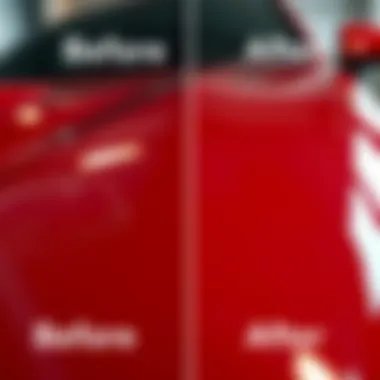
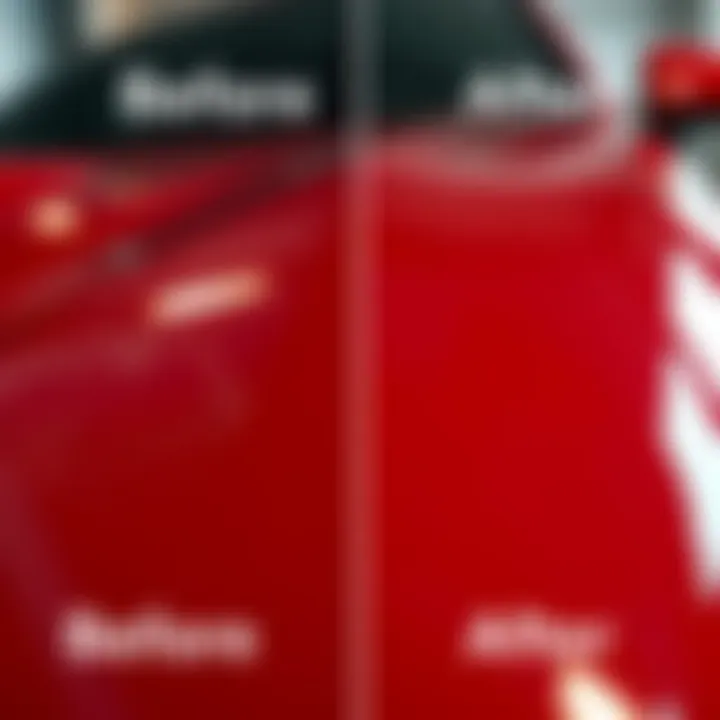
Turning to professional services can often seem like the most sensible route. These practices typically implement advanced technologies and expertise—which means better results. For example, a highly skilled technician can assess scratch depth and the vehicle's paint type to select the appropriate repair approach. Here are several benefits of seeking professional help:
- Expert Assessment: Pros can distinguish between surface and deeper scratches, ensuring you don't waste money on unnecessary treatments.
- High-Quality Products: Professionals often use top-tier products that aren’t accessible over-the-counter. This can significantly increase the likelihood of a perfect finish.
- Time Efficiency: Repairing scratches can take time and effort if done at home. Professionals can handle it swiftly, letting you return to your regular routine.
- Risk Mitigation: Skilled hands reduce the risk of causing more damage, which can happen when inexperienced individuals attempt difficult repairs.
However, this option can be more costly. Sometimes, a service might seem overpriced compared to DIY solutions. Therefore, assess your car's value versus the cost of professional repairs—sometimes, the expense might be justified, especially with vintage or high-end vehicles.
DIY Scratch Repair Kits
For the more hands-on car enthusiasts or those just keen to save some dollars, DIY kits present a viable alternative to buffing. These kits have become incredibly popular. They claim to address a range of scratches without needing a professional's touch. Common contents include polish, applicators, and sometimes, even instructions to guide you through the scratching removal process. Here’s what you should keep in mind:
- Affordability: DIY kits are often a fraction of the cost of professional services, making it easier on your wallet.
- Convenience: You can work at your own pace and on your own schedule without needing to drive to a shop and wait for an appointment.
- Skill Development: Testing out these kits can sharpen your skills and give you the confidence you need for future repairs. You might find yourself enjoying the hands-on aspect.
However, consider the following limitations of DIY kits:
- Varied Quality: The quality of the products can vary widely. Some brands may not live up to their promise, and results can be hit or miss.
- Time Consumption: While initially quicker, you may spend hours trying to achieve results that a professional could do in mere minutes.
- Potential for Mistakes: Without the right knowledge, you risk worsening the scratches or causing new ones.
Consumer Insights and Market Trends
Customer Satisfaction with Scratch Removal Methods
When it comes to car scratch removal, customer satisfaction serves as a bellwether for the effectiveness of buffing compared to other methods. Surveys and feedback often reveal that drivers seek solutions that not only restore a car's finish but also offer convenience and affordability. Many consumers have shared their experiences on forums like reddit.com, emphasizing that a successful scratch removal not only restores aesthetics but reinstills pride in ownership.
Among the diverse scratch removal methods—such as buffing, professional repairs, and DIY kits—customers often favor solutions that yield tangible results without the hefty price tag of professional services. It’s noteworthy that those who regularly maintain their vehicles with a robust care regimen tend to report higher satisfaction levels.
"I tried buffing my car myself after a scrape. It was nearly as rewarding as waxing my old guitar! I felt successful!"
In particular, users mention various brands of buffing products that make the task easier. Effectiveness is often measured not just by scratch disappearance but by the ease of application, time taken, and endurance of the finish. Moreover, positive results tend to encourage repeat applications and loyalty to specific brands or methodologies.
Analysis of Popular Buffing Products
The market is flooded with an array of buffing products, each promising to transform scratches into mere memories. A thorough analysis reveals the keys to understanding what drives consumer preference. Key elements include:
- Brand Quality: Well-regarded brands such as Meguiar's and 3M are frequently mentioned. Their established reputation often fosters initial consumer trust.
- User Reviews: An analysis of online platforms shows patterns; products with higher ratings often correlate with effective results. Clarity and ease of use are critical points.
- Cost Proficiency: While premium products exist, many consumers opt for mid-range solutions that provide reliable results without breaking the bank.
- Availability: With the rise of e-commerce, consumers appreciate products that are readily accessible, such as those found on websites like automotiverepair.com or local auto parts stores.
Comparing these products, it's evident that newer formulations may include advanced compounds designed to enhance ease of use and effectiveness.
Culmination
The conclusion of this article is essential in tying together all the insights provided regarding buffing as a method for car scratch removal. It serves as a final checkpoint, allowing readers a moment to reflect on what has been discussed, and to grasp the full scope of buffing's efficacy and limitations.
Summarizing Buffing Efficacy
In summarizing the efficacy of buffing, it is crucial to highlight the conditions under which buffing proves most effective. Buffing works wonders on surface scratches, especially when they haven’t penetrated the clear coat of the paint. For car owners looking for immediate cosmetic fixes, this is often a quick and satisfactory solution. Yet, buffing isn’t a magic wand; deeper scratches may require more intensive repair methods.
Additionally, the tools and compounds used during the buffing process play a role in the outcome. High-quality buffing pads and compounds tailored for specific paint types tend to yield better results. Customers should also consider environmental factors, as humidity and temperature can affect the buffing process.
"Buffing can breathe new life into a scratched vehicle, but it’s not without its challenges and risks."
Future Considerations for Scratch Repair
When looking towards the future of scratch repair, several factors must be taken into account. As technology in the automotive field continues to advance, we can expect new methods and materials to emerge, enhancing scratch repair options available to consumers. For instance, advancements in paint technology may soon provide options that are more resistant to scratches, thus reducing the need for buffing as a remedy altogether.
Moreover, eco-friendliness is becoming increasingly vital. We may see a shift towards the use of biodegradable compounds and more sustainable practices in car surface care as awareness of environmental impacts grows. This evolution in the market could lead to new industry standards, benefiting not only car owners but also the planet.
Lastly, educating consumers on proper vehicle maintenance will become even more critical. Encouraging proactive care can prevent scratches from forming in the first place, making buffing an occasional necessity rather than a routine fix. For automotive enthusiasts and everyday drivers alike, understanding not just how to remove scratches, but also how to avoid them, will improve their vehicle’s longevity and appearance.















